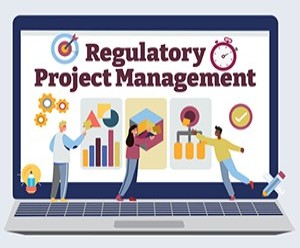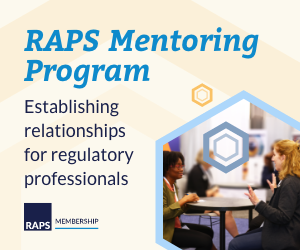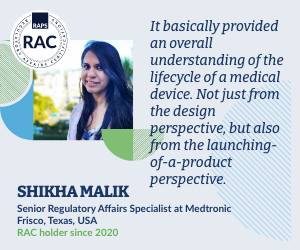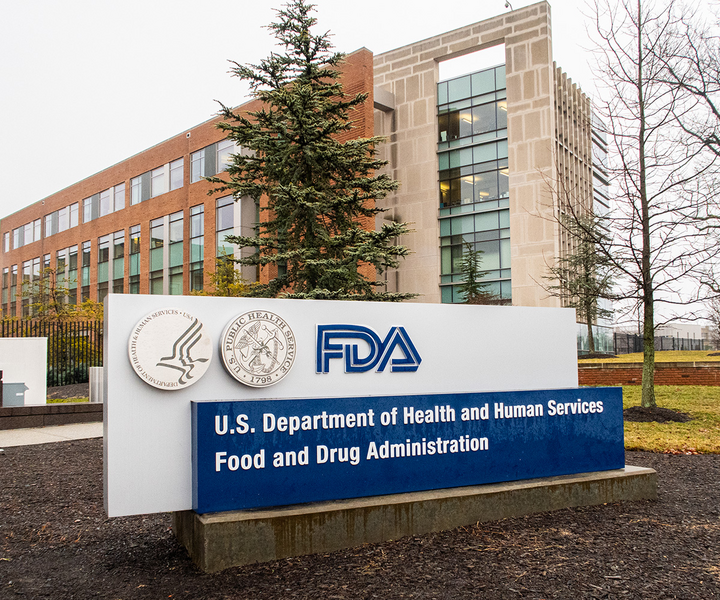Shuren: Getting QMSR out by year’s end a ‘high priority’
![]() Regulatory News | 23 May 2023 |
Regulatory News | 23 May 2023 |
CDRH Director Jeff Shuren spoke to attendees at the FDLI 2023 Annual Conference. (Source: Ferdous Al-Faruque)
WASHINGTON, DC – The US Food and Drug Administration’s top medical device regulator said that finalizing a rule meant to harmonize the agency’s Quality System Regulation (QSR) with the international standard ISO 13485:2016 by the end of 2023 is a “high priority” for his center.
Early last year, FDA proposed its plans to align its quality system requirements with ISO 13485:2016, creating a new regulation dubbed the Quality Management System Regulation (QMRS). The long-awaited move came four years after the agency first proposed the regulatory alignment, a move which could create efficiencies for manufacturers who already conform to the ISO standard.
Speaking at the Food and Drug Law Institute’s (FDLI) annual conference in Washington, DC last week, Jeff Shuren, director of FDA’s Center for Devices and Radiological Health (CDRH), outlined what his center has been up to and said he hopes to get the final rule published this year.
"That is high priority, and it is our hope that it is out by the end of this year,” Shuren told the audience.
Shuren’s stated goal for getting the final rule out aligns with the timeframe laid out in the current unified agenda, which sets December 2023 as the final rule’s expected date.
At the MedCon conference in Columbus, OH, last month, FDA staff said they are updating their technology systems, training staff and replacing the Quality System Inspection Technique (QSIT) in preparation for QMSR. They added the agency is updating regulations, policies, procedures and other documents in anticipation of the change. (RELATED: MedCon: FDA ramps up for transition to QMSR, Regulatory Focus 27 April 2023)
During his talk, Shuren also highlighted the shortcomings of the US healthcare system and what CDRH is trying to do to improve it.
"We have the distinction of being the country that pays the most and gets the least,” said Shuren. “People just die younger, and we pay more for that privilege; that's the US healthcare system.”
“We should stop saying we have the best healthcare system because we don't,” he added. “If you're going to change that system ... you're going to have to change healthcare (delivery) from healthcare facilities to people where they are.”
Shuren went on to say that CDRH has changed its view of putting patients first to putting people first. That means his center wants to focus on helping get people preventative care which includes encouraging technology that allows diagnosis, monitoring and treatment at home, when possible.
“It’s not just about moving from the hospital to the home, it’s really about how we deliver care,” said Shuren. “You can’t just throw a bunch of technology at people; you actually have to change the environment where they are.”
Shuren went on to express his hopes for digital health, which he called a “linchpin” that opens up opportunities for screening, diagnosis, treatment and disease management of people outside of the traditional healthcare settings.
Shuren also highlighted the recent Medical Device User Fee Amendment (MDUFA V) program, which includes the Total Product Lifecycle Advisory Program (TAP) pilot. He said the program has the potential to be a game changer in the way medical products come to market, by allowing stakeholders such as patients, physicians and health insurers to hold early conversations with product sponsors to streamline their product development and review process. (RELATED: MedCon: TAP pilot off the ground four devices enrolled, Regulatory Focus 25 April 2023)
Shuren said he hopes the pilot will develop into a fully-fledged program that can narrow the gap between FDA approval and reimbursement for breakthrough medical devices, referring to the so-called “Valley of Death.”
Another topic Shuren raised is the proposed voluntary alternative pathway (VAP) program, which he previously described as “regulatory Legos.” He noted that the regulations that govern how medical devices and diagnostics get to market are nearly 50 years old and aren’t well-suited to some new technologies such as digital health and artificial intelligence/machine learning (AI/ML). (RELATED: Shuren: Let’s take regulatory flexibility beyond COVID-19, Regulatory Focus 22 March 2022)
Shuren said that the current regulatory system is focused on safety and doesn’t take into consideration the fast pace of innovation. He also argued that offering a voluntary alternative pathway may help get products to market more quickly without compromising patient safety, though such a pathway would require legislative support from Congress.
“What VAP would be is you don't change the standard to market, you provide the flexibility to design the pathway to market that's based on the technology,” said Shuren.
Shuren cited the agency’s digital health software pre-certification (Pre-Cert) program as an example where the VAP could be useful.
FDA piloted the Pre-Cert program to test what it called an “adaptive regulatory approach” for software as a medical device (SaMD) products. However, the agency concluded that only a very limited number of digital health products could qualify coming to market through the Pre-Cert program due to the agency’s limited regulatory authorities. (RELATED: FDA acknowledges shortcomings of Pre-Cert pilot in report, Regulatory Focus 3 October 2022)
“For some 510(k) technologies we could see where we might put out performance standards and then rather than coming in the door with the data, if you could demonstrate you did well on certain capabilities in flushing this out, then you could do a self-certification,” said Shuren.
Shuren added that VAP could be a “radical paradigm change” for medical software products and “facilitate responsible innovation.”
Early last year, FDA proposed its plans to align its quality system requirements with ISO 13485:2016, creating a new regulation dubbed the Quality Management System Regulation (QMRS). The long-awaited move came four years after the agency first proposed the regulatory alignment, a move which could create efficiencies for manufacturers who already conform to the ISO standard.
Speaking at the Food and Drug Law Institute’s (FDLI) annual conference in Washington, DC last week, Jeff Shuren, director of FDA’s Center for Devices and Radiological Health (CDRH), outlined what his center has been up to and said he hopes to get the final rule published this year.
"That is high priority, and it is our hope that it is out by the end of this year,” Shuren told the audience.
Shuren’s stated goal for getting the final rule out aligns with the timeframe laid out in the current unified agenda, which sets December 2023 as the final rule’s expected date.
At the MedCon conference in Columbus, OH, last month, FDA staff said they are updating their technology systems, training staff and replacing the Quality System Inspection Technique (QSIT) in preparation for QMSR. They added the agency is updating regulations, policies, procedures and other documents in anticipation of the change. (RELATED: MedCon: FDA ramps up for transition to QMSR, Regulatory Focus 27 April 2023)
During his talk, Shuren also highlighted the shortcomings of the US healthcare system and what CDRH is trying to do to improve it.
"We have the distinction of being the country that pays the most and gets the least,” said Shuren. “People just die younger, and we pay more for that privilege; that's the US healthcare system.”
“We should stop saying we have the best healthcare system because we don't,” he added. “If you're going to change that system ... you're going to have to change healthcare (delivery) from healthcare facilities to people where they are.”
Shuren went on to say that CDRH has changed its view of putting patients first to putting people first. That means his center wants to focus on helping get people preventative care which includes encouraging technology that allows diagnosis, monitoring and treatment at home, when possible.
“It’s not just about moving from the hospital to the home, it’s really about how we deliver care,” said Shuren. “You can’t just throw a bunch of technology at people; you actually have to change the environment where they are.”
Shuren went on to express his hopes for digital health, which he called a “linchpin” that opens up opportunities for screening, diagnosis, treatment and disease management of people outside of the traditional healthcare settings.
Shuren also highlighted the recent Medical Device User Fee Amendment (MDUFA V) program, which includes the Total Product Lifecycle Advisory Program (TAP) pilot. He said the program has the potential to be a game changer in the way medical products come to market, by allowing stakeholders such as patients, physicians and health insurers to hold early conversations with product sponsors to streamline their product development and review process. (RELATED: MedCon: TAP pilot off the ground four devices enrolled, Regulatory Focus 25 April 2023)
Shuren said he hopes the pilot will develop into a fully-fledged program that can narrow the gap between FDA approval and reimbursement for breakthrough medical devices, referring to the so-called “Valley of Death.”
Another topic Shuren raised is the proposed voluntary alternative pathway (VAP) program, which he previously described as “regulatory Legos.” He noted that the regulations that govern how medical devices and diagnostics get to market are nearly 50 years old and aren’t well-suited to some new technologies such as digital health and artificial intelligence/machine learning (AI/ML). (RELATED: Shuren: Let’s take regulatory flexibility beyond COVID-19, Regulatory Focus 22 March 2022)
Shuren said that the current regulatory system is focused on safety and doesn’t take into consideration the fast pace of innovation. He also argued that offering a voluntary alternative pathway may help get products to market more quickly without compromising patient safety, though such a pathway would require legislative support from Congress.
“What VAP would be is you don't change the standard to market, you provide the flexibility to design the pathway to market that's based on the technology,” said Shuren.
Shuren cited the agency’s digital health software pre-certification (Pre-Cert) program as an example where the VAP could be useful.
FDA piloted the Pre-Cert program to test what it called an “adaptive regulatory approach” for software as a medical device (SaMD) products. However, the agency concluded that only a very limited number of digital health products could qualify coming to market through the Pre-Cert program due to the agency’s limited regulatory authorities. (RELATED: FDA acknowledges shortcomings of Pre-Cert pilot in report, Regulatory Focus 3 October 2022)
“For some 510(k) technologies we could see where we might put out performance standards and then rather than coming in the door with the data, if you could demonstrate you did well on certain capabilities in flushing this out, then you could do a self-certification,” said Shuren.
Shuren added that VAP could be a “radical paradigm change” for medical software products and “facilitate responsible innovation.”
© 2025 Regulatory Affairs Professionals Society.









![Regulation of Combination Products [3.0 RAC]](https://my.raps.org:443/images/ddce3700-2e5e-4253-a0be-19812e2decf5.img?resize=yes)




